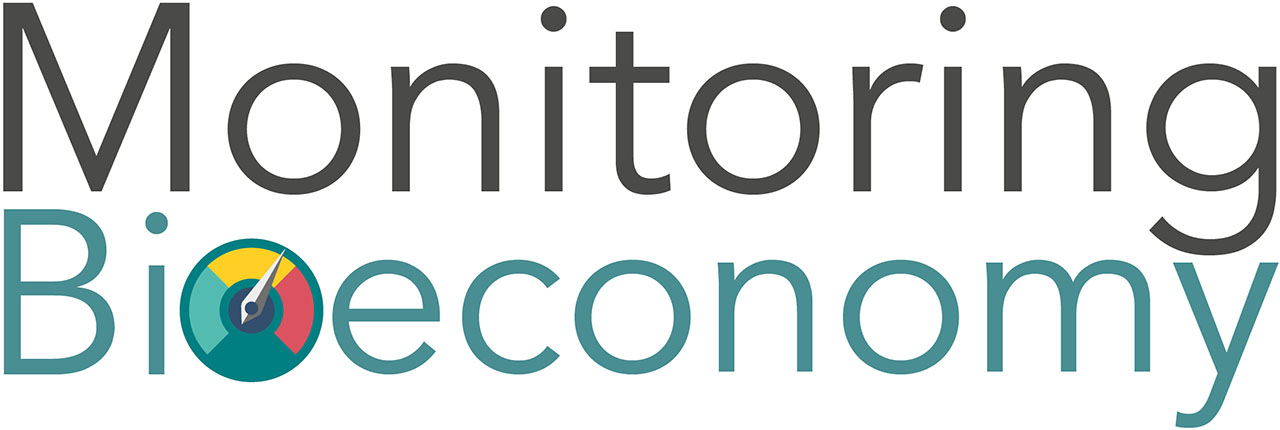What is material flow analysis? I How does material flow analysis contribute to the assessment of the bioeconomy? I What are the limitations?
What is material flow analysis?
Material Flow Analysis (MFA) is an accounting framework to quantify and trace material flows into, through and out of a system, for instance, a national economic system. It comprises a group of methods that can be applied at different scales [1]. Economy-wide MFA provides the basis for assessing the socioeconomic metabolism of countries. It helps quantify material inputs, consumption levels as well as waste and emissions, depending on the scope and the materials in focus. In MFA, guiding principles, such as maintaining material balances, contribute to a robust accounting framework. Standardized definitions of material flow indicators ensure clarity and comparability of results [2]. MFA is often applied to specific sectors or to specific materials, such as in the Pilot report on the monitoring of the German bioeconomy [3]. It can also be applied to cities or regions [4].

Material Flow Analysis quantifies material input and output flows to and from a given economic system. It accounts for the material exchange with other economies and the environment, as well as the change in societal stocks. (Source: Based on Eurostat 2009 [13]).
How does material flow analysis contribute to the assessment of the bioeconomy?
Quantifying the biophysical dimension of socio-economic activities is key to understanding the basis of sustainable production and consumption. Materials make up the basis of our economies and welfare, while at the same time, they are limited and associated with environmental pressures and impacts [5]. The perspective of a socioeconomic metabolism highlights this embeddedness of the society in its environment and underscores the dependency on physical material flows and other ecosystem services [6]. Thus, it is key to understand what the socioeconomic metabolism of both the bio-based and the mineral-based economy looks like to determine effective levers for sustainability [7].
In practical terms, the knowledge of material flows helps provide a fundamental basis for priority-setting and identification of levers. Only by knowing how we use physical materials, appropriate strategies to redirect materials flows can be selected and priority setting can be adjusted. For instance, the current German food consumption requires four times as much animal feed as (plant-based) food [3], which indicates a need for increasingly plant-based diets to use biomass and agricultural land more efficiently. At a sectoral level, MFA can help quantify and disclose by-products, which makes visible both potentials and limitations of different circular economy strategies. MFA can also be used to reveal inefficiencies and losses throughout a sector [8], quantify emissions from specific processes related to material extraction and use [9] and map recycling flows and recycling efficiency [10].
What are the limitations?
The main challenges include finding reliable data. MFA has become an established research field; its first methodological standards were developed in the 1990s and 2000s [11]. In recent years, a lot of effort are put into collecting and structuring data in sectorally and regionally differentiated input-output databases [12]. Data availability and reliability have improved and continue to grow, for instance through the recent developments of new MRIO databases.
The analysis of material flows quantifies the bridge from resource extraction or harvest to the final consumption of goods. Their turnover determines the basis of environmental impacts which can be determined by coupling with further specific models (e.g. on induced land use change and biodiversity impacts or enhanced water scarcity in the regions of origin).
Notes and references
- Bringezu and Moriguchi (2002). Material Flow Analysis. Handbook of Industrial Ecology. Available at: http://pustaka.unp.ac.id/file/abstrak_kki/EBOOKS/A%20Handbook%20of%20Industrial%20Ecology.pdf.
- For a thorough description see: Fischer-Kowalski et al. (2011). Methodology and Indicators of Economy-wide Material Flow Accounting. Journal of Industr. Ecol. doi: 10.1111/j.1530-9290.2011.00366.x. Eurostat (available at: https://ec.europa.eu/eurostat/web/products-manuals-and-guidelines/-/ks-gq-18-006) and OECD (available at: https://www.oecd.org/environment/indicators-modelling-outlooks/MFA-Guide.pdf) have integrated such frameworks in their accounting.
- Bringezu et al. (2020). Pilotbericht zum Monitoring der deutschen Bioökonomie. doi: 10.17170/kobra-202005131255.
- Hendriks et al. (2000). Material Flow Analysis: A tool to support environmental policy decision making. Case-studies on the city of Vienna and the Swiss lowlands. Local Environ. doi: 10.1080/13549830050134257.
- Bringezu (2022). The World Budget: Safe and fair resource use for global survival and well-being.
- Haberl and Fischer-Kowalski (2007). Advances in ecological economics. Socioecological transitions and global change: Trajectories of social metabolism and land use.
- Haberl et al. (2004). Progress towards sustainability? What the conceptual framework of material and energy flow accounting (MEFA) can offer. Land Use Policy. doi: 10.1016/j.landusepol.2003.10.013.
- Bringezu et al. (2020). Pilotbericht zum Monitoring der deutschen Bioökonomie. doi: 10.17170/kobra-202005131255. And Brosowski et al. (2019). How to measure the impact of biogenic residues, wastes and by-products: Development of a national resource monitoring based on the example of Germany. Biomass and Bioenergy. doi: 10.1016/j.biombioe.2019.105275.
- Müller et al. (2013). Carbon emissions of infrastructure development. Environ. scien. & technol. doi: 10.1021/es402618m.
- Haupt et al. (2017). Do We Have the Right Performance Indicators for the Circular Economy? Insight into the Swiss Waste Management System. Journal of Industr. Ecol. doi: 10.1111/jiec.12506.
- Fischer-Kowalski et al. (2011). Methodology and Indicators of Economy-wide Material Flow Accounting. Journal of Industr. Ecol. doi: 10.1111/j.1530-9290.2011.00366.x
- For instance the development of a physical MRIO data base (see 12), the IRP MRIO data base GLORIA (see 13) and data models and structures (such as Pauliuk et al. (2019). A general data model for socioeconomic metabolism and its implementation in an industrial ecology data commons prototype. Journal of Industr. Ecol. doi: 10.1111/jiec.12890).
- Eurostat (2009). Economy wide material flow accounts: compilation guidelines for reporting to the 2009 Eurostat questionnaire. Available at: https://unstats.un.org/unsd/envaccounting/ceea/archive/Framework/Eurostat%20MFA%20compilation%20guide_2009.pdf
